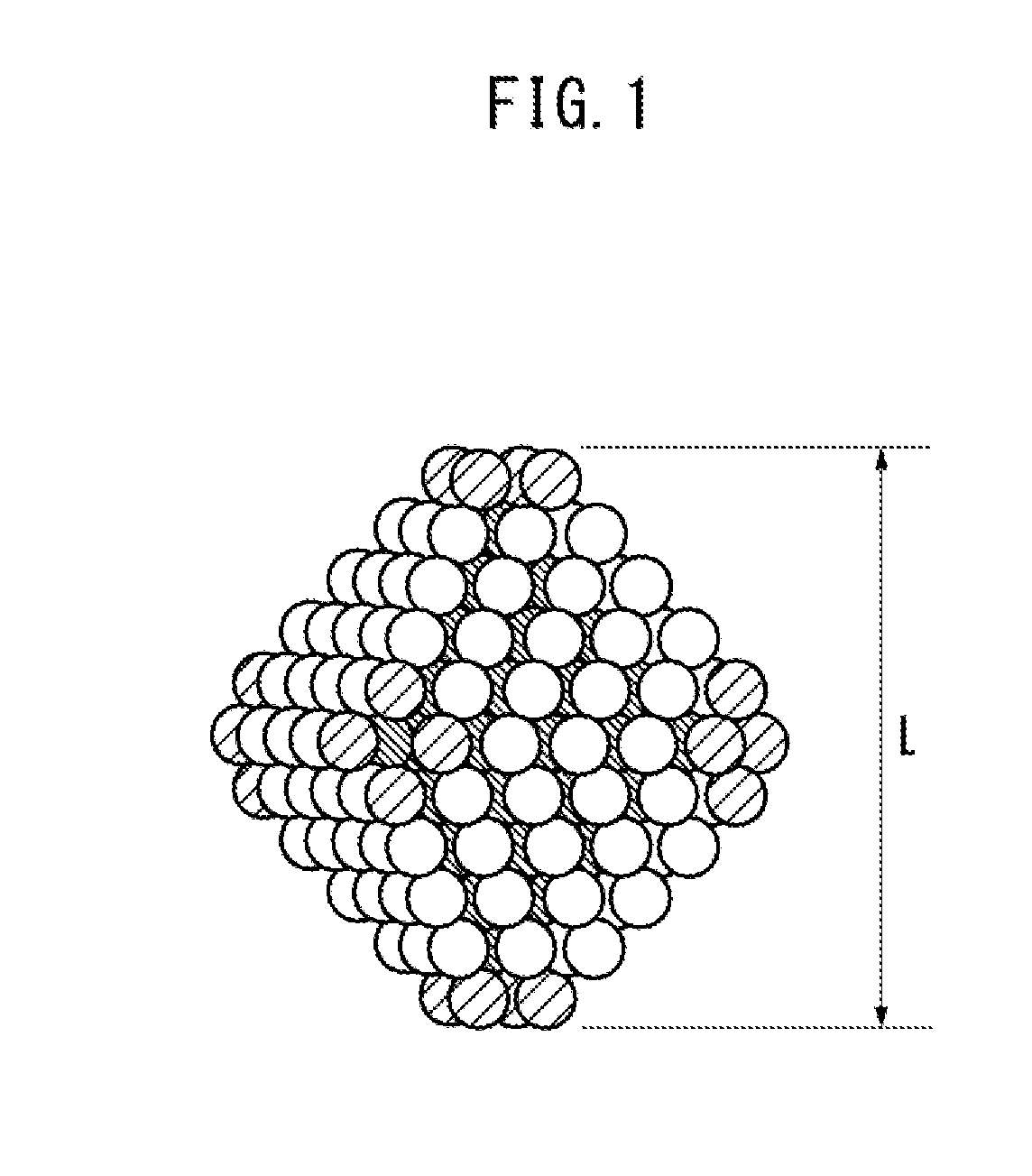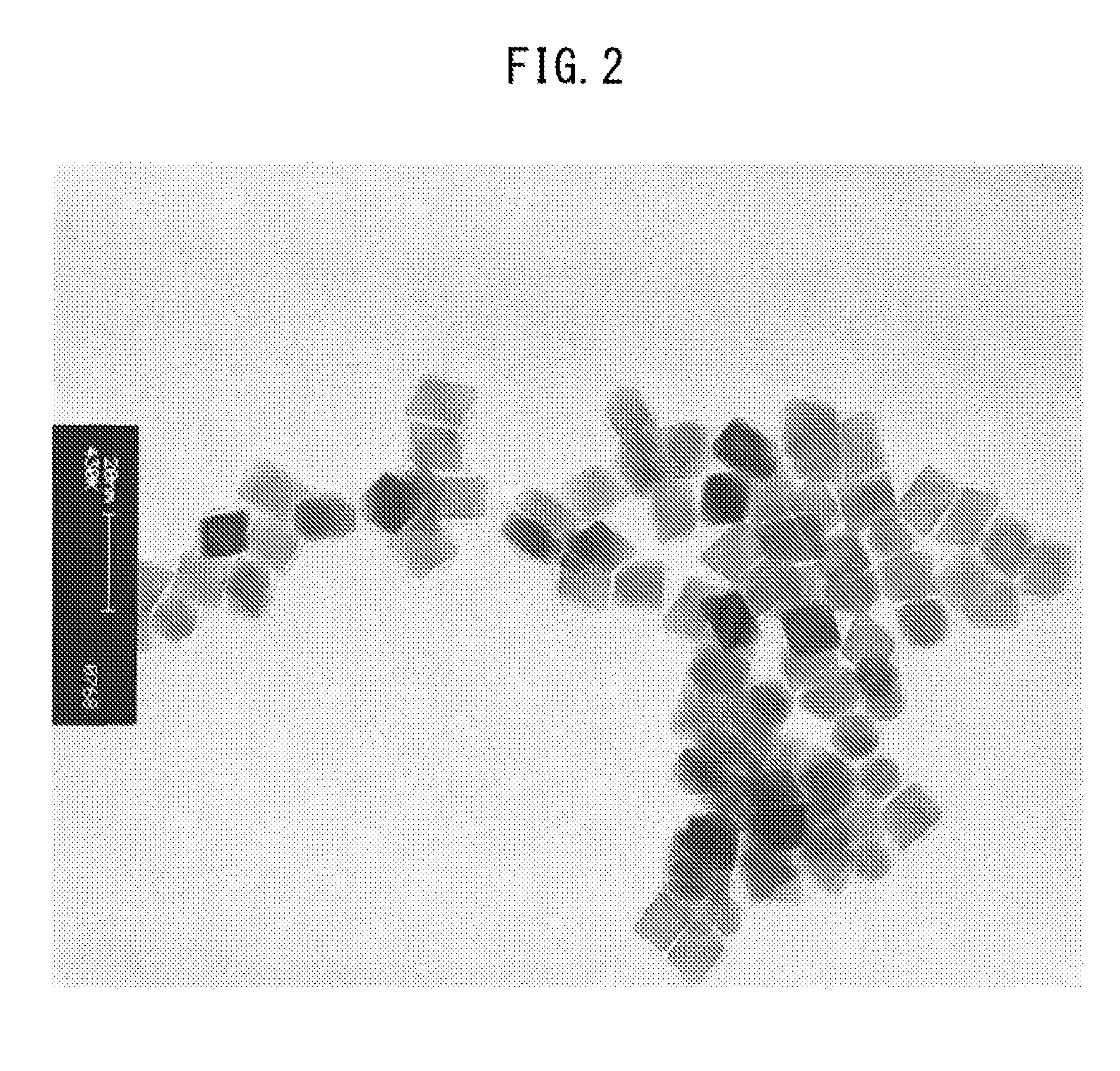Method for Producing Alloy Catalyst for Redox Reaction
- Summary
- Abstract
- Description
- Claims
- Application Information
AI Technical Summary
Benefits of technology
Problems solved by technology
Method used
Image
Examples
Embodiment Construction
[0049]Next, an embodiment of the present invention will be described in further detail with reference to the accompanying drawings.
[0050]The alloy catalyst for redox reaction obtained by the production method of the present embodiment comprises alloy particles of platinum and nickel, wherein the alloy particle is equipped at an outer surface with a crystal lattice plane represented by a Miller index {111}, and has an average particle diameter in the range of 6 to 20 nm.
[0051]As one example, a typical diagram showing the alloy particles of platinum and nickel having a truncated regular octahedron shape is shown in FIG. 1. In FIG. 1, white balls without hatched lines indicate, of the atoms constituting the truncated regular octahedron, the atoms exposed to the outer surface and forming the crystal lattice plane represented by the Miller index {111}. Further, in FIG. 1, balls with hatched lines extending from upper right to lower left indicate the atoms exposed to the outer surface and...
PUM
| Property | Measurement | Unit |
|---|---|---|
| Temperature | aaaaa | aaaaa |
| Temperature | aaaaa | aaaaa |
| Time | aaaaa | aaaaa |
Abstract
Description
Claims
Application Information
 Login to View More
Login to View More - R&D
- Intellectual Property
- Life Sciences
- Materials
- Tech Scout
- Unparalleled Data Quality
- Higher Quality Content
- 60% Fewer Hallucinations
Browse by: Latest US Patents, China's latest patents, Technical Efficacy Thesaurus, Application Domain, Technology Topic, Popular Technical Reports.
© 2025 PatSnap. All rights reserved.Legal|Privacy policy|Modern Slavery Act Transparency Statement|Sitemap|About US| Contact US: help@patsnap.com



